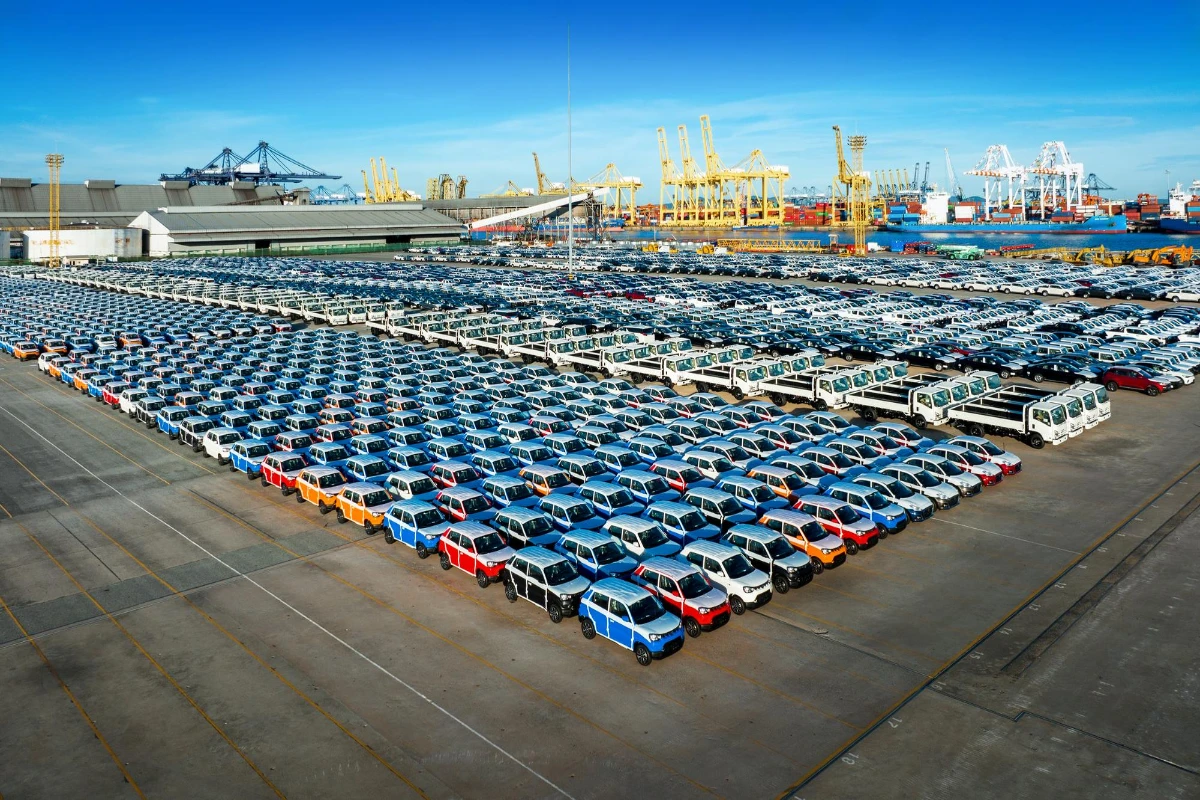
With regard to the importation of cars into the US, there is one critical dimension that frequently becomes a factor in the deliberations and this reads as not surprisingly – United States custom duty on automobiles, also known as car import duty. This obligation, often a crucial consideration for importers, can greatly influence the total cost of an automobile entering through the country boundary. If you are an importer who needs to bring in a fleet of vehicles or if it is about importing single cars, then the important issue here would be your knowledge regarding implications for duties, specifically US Import Duty on Cars.
Understanding Import Duty
Import duty is also known as customs duty which it’s a tax levied by the government of a country to any goods that are being imported from other countries. It is multifunctional, combining various objectives that concern regulation of trade activities, protectionism within industries and generating revenue. The import duty rates are also different for vehicles depending on some factors that include the type of vehicle, country origin and special features.
The process of Importing Cars to the US

Importing a car to the US involves several steps, including:
- Compliance with Regulations: Make sure that the vehicle adheres to all safety and emissions standards US DOT as well as EPA.
- Submission of Documentation: Have all the necessary records, for example title papers and a bill of sale as well any imported documentation in case you are importing goods by road or rail.
- Payment of Duties and Taxes: Compute and remit the mandated import tariffs, taxes, and fees inclusive of US duties to automobiles.
- Customs Clearance: Finalize customs clearance processes that can have CBP inspecting and evaluating your vehicle.
- Registration and Titling: Register and brand the imported car with relevant state officers.
Factors Affecting Import Duty Rates
Country of Origin
The place of the vehicle manufacture is a major factor in determining not only where but also how much to be charged as an import duty. If importing vehicles then the ones gaining from free trade agreement countries can be imported for minimum or nil Duties.
Vehicle Type
Duty rates may apply to various vehicles differently. For instance, passenger cars and trucks could have various rates of duty they attract depending on which category each one belongs to; in the case motorbikes.
Vehicle Value
The customs value of the vehicle; its purchase price, shipping costs and insurance determines how much import duty is to be paid. More expensive vehicles will have to pay more duty.
Tariff Preferences
Some agreed trade agreements and tariff preference programs even specify reduced duty rates or exemptions for qualified automobiles.
Calculating US Import Duty on Cars: A Comprehensive Guide

Import duty calculation, particularly in the context of US Import Duty on Cars, involves a series of processes and factors. The process starts with determining the customs value, including the import price for importers to factor in the purchase price, freight charges, insurance costs, and all other expenses until it reaches the destination port. The obtained value is then multiplied by the duty rate to calculate the amount on which the product has been taxed. This process helps in figuring out whether your car is subject to duties or not. It’s important to note that this method is still widely applied today despite modernization.
Dutiable Entry
When bringing foreign-made vehicles into the United States, whether they are new or used, for personal use or sale, they are typically subject to specific duty rates. These rates vary depending on the type of vehicle:
- Automobiles: 2.5%
- Trucks: 25%
- Motorcycles: 2.4% or exempted
Duty rates are calculated based on the price paid or payable for the vehicle.
As a U.S. resident returning from abroad, you have the option to apply your $800 Customs and Border Protection (CBP) exemption, as well as those of your accompanying family members, towards the vehicle’s value under certain conditions:
- The vehicle must accompany you on your return.
- It must be imported for personal use.
- You must have acquired it during the journey from which you are returning.
For CBP purposes, a returning U.S. resident includes individuals returning from travel, work, or study abroad.
Once the exemption has been utilized, a flat duty rate of 3% is imposed on the next $1,000 of the vehicle’s value. Any remaining amount is subject to the regular duty rate.
Free Entry
- U.S. citizens working abroad or government employees returning temporarily can bring in a foreign-made car duty-free if they claim nonresident status and export the vehicle when leaving the U.S.
- Military and civilian U.S. government employees returning from extended duty outside the U.S. can bring a conforming vehicle duty-free as part of their personal belongings. The vehicle must be purchased abroad and owned before departure, typically after a duty of 140 days or more. Navy personnel on extended overseas deployment of 120 days or more also qualify. If sold within a year, these vehicles become dutiable, with duty payable at a CBP office. Once formally entered for EPA purposes, they can remain in the U.S. indefinitely.
- Nonresidents can import a vehicle duty-free for personal use for up to one year if imported upon their arrival. Vehicles not meeting U.S. safety and emission standards must be exported within a year and cannot be sold in the U.S.
- New and used cars from Canada and Mexico can be imported duty-free under the USMCA, but only if they meet strict requirements:
- Cars made before 2020: Won’t qualify due to stricter USMCA rules.
- Cars made after July 1, 2020: Might qualify, but the importer needs specific documents including regional value content (RVC), labor value content (LVC), steel purchasing and aluminum purchasing from the manufacturer. Otherwise, they’ll pay duties.
- Alternative option: Used cars originally from the US can be imported duty-free under the U.S. Goods Returned if:
- They were exported within the past 3 years.
- They haven’t been changed or improved while abroad.
Vehicles imported for alternative reasons
Nonresidents can bring automobiles or motorcycles duty-free for temporary stays to participate in races or other specific purposes, but prior EPA approval is required. Approval is granted only for racing vehicles deemed unsafe for street and highway use. If contests are non-commercial, vehicles can be admitted for 90 days without entry formalities or bond, pending CBP officer approval.
Failure to export or provide a bond within 90 days may lead to forfeiture. DOT approval is necessary for temporary imports for testing, demonstration, or racing. Permanent imports for show or display must comply with U.S. emission standards and be modified and tested by an EPA-authorized ICI. EPA won’t release the vehicle until ICI work is complete. DOT approval is required before exporting the vehicle to the U.S. Information on importing for show or display is available on DOT’s NHTSA Vehicle Importation Regulations website.
Federal Tax

- Certain imported vehicles may be subject to the gas-guzzler tax as outlined in section 4064 of the Internal Revenue Code. Individuals importing automobiles for personal use or commercial purposes may be considered importers and are responsible for paying this tax.
- The tax amount is determined based on a combined urban/highway fuel economy rating assigned by the EPA specifically for gas-guzzler tax purposes. This rating may differ from the manufacturer’s fuel economy ratings.
- If the EPA hasn’t assigned a gas-guzzler fuel economy rating for the imported model, an independent rating must be established. No tax is imposed on vehicles with a combined fuel economy rating of at least 22.5 miles per gallon.
- Details on determining the fuel economy rating and tax liability can be found in section 4064 of the Code, Revenue Procedures 86-9 and 87-10, and Revenue Ruling 86-20.
- The gas-guzzler tax is reported on Form 720, Quarterly Federal Excise Tax Return, and Form 6197, Gas-Guzzler Tax. Further information can be obtained from local district offices of the Internal Revenue Service.
Gas-Guzzler Tax
To ascertain if you are subject to this tax, passenger vehicles sold post-December 31, 1990, with a combined FTP/HFET-based model type fuel economy rating below 22.5 mpg are assessed. The calculation is rounded to the nearest 0.1 mpg. Additionally you can check the US Environmental Protection Agency’s website for lists of vehicles subject to the tax, organized by model year since 1980. Vintage cars made before the gas-guzzler tax implementation are exempt, just like they are from emissions rules. If your vehicle is listed, you’ll have to pay. This tax is progressive, meaning the worse your car’s fuel efficiency, the higher the cost to import it. The present rates are as stated below:
| Average fuel economy (mpg) | Tax payable |
| 21.5-22.5 | $ 1,000 |
| 20.5-21.5 | $ 1,300 |
| 19.5-20.5 | $ 1,700 |
| 18.5-19.5 | $ 2,100 |
| 17.5-18.5 | $ 2,600 |
| 16.5-17.5 | $ 3,000 |
| 15.5-16.5 | $ 3,700 |
| 14.5-15.5 | $ 4,500 |
| 13.5-14.5 | $ 5,400 |
| 12.5-13.5 | $ 6,400 |
| <12.5 | $ 7,700 |
Streamlining Car Importation into the US: Necessary Considerations
Importing cars into the United States is navigated by understanding various aspects that determine import duty rates. Such factors are the country of manufacture, type and value if applicable any trade agreement or tariff preferences. Importers as well have concerns about gas-guzzler tax and others because automobiles must consume a considerable amount of fuel and are sold at high prices.
The taxes, especially related to US Import Duty on Cars, serve the purpose of establishing a foundation for the fuel guzzling rating assigned by the Environmental Protection Agency (EPA). Importation must adhere to compliance with safety and emissions standards, proper documentation, as well as pertinent customs clearance. Addressing these concerns holistically enables both individuals and businesses to legally import motor vehicles into the US with minimal liabilities. Avoiding the hassles of import duty rates, taxes, and regulations is made smooth with the expertise of Border123. Call us now!
Frequently Asked Questions
How is import duty calculated?
Import duty is typically calculated as a percentage of the vehicle’s value, based on the Harmonized Tariff Schedule.
Are there any exemptions or reduced rates for certain vehicles?
Yes, certain vehicles, such as electric cars or those from countries with free trade agreements, may qualify for exemptions or reduced duty rates.
What documents are required for customs clearance?
Documents required for customs clearance include the bill of lading, import declaration, and proof of compliance with safety and emissions standards.
Can I import a car for personal use to Canada?
Yes, individuals can import cars for personal use to Canada, but they must comply with federal and provincial regulations regarding emissions, safety, and registration.
How long does the importation process take?
The duration of the importation process can vary depending on factors such as shipping method, customs processing times, and compliance requirements, but it typically takes several weeks to months.
Are there any restrictions on the types of vehicles that can be imported?
Yes, certain vehicles, such as those that do not meet safety or emissions standards, may be subject to restrictions or require modifications to comply with regulations.


